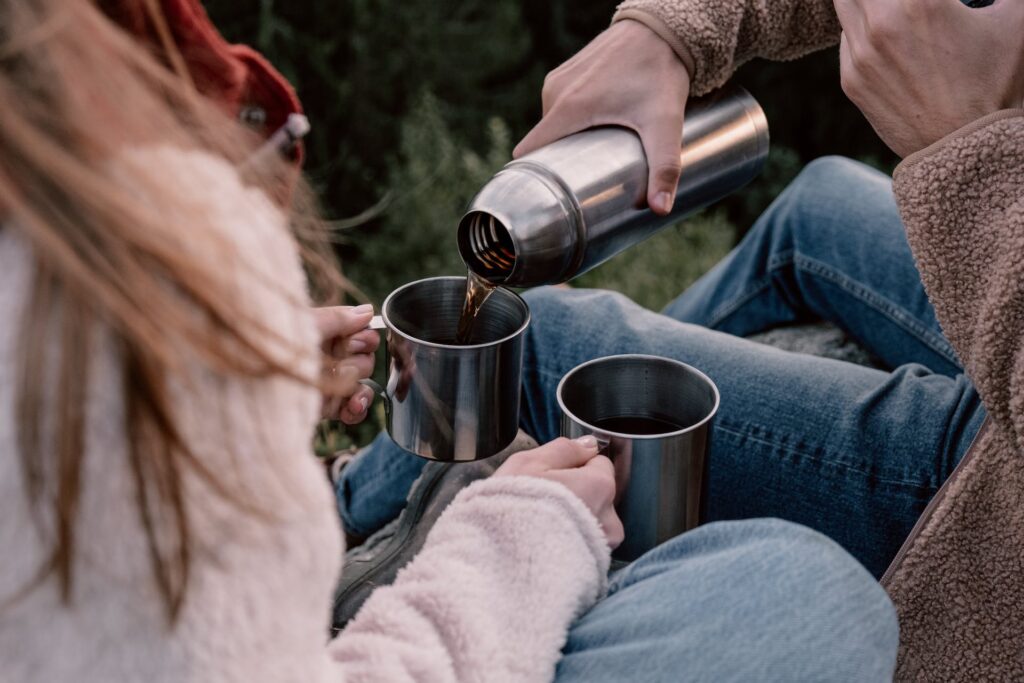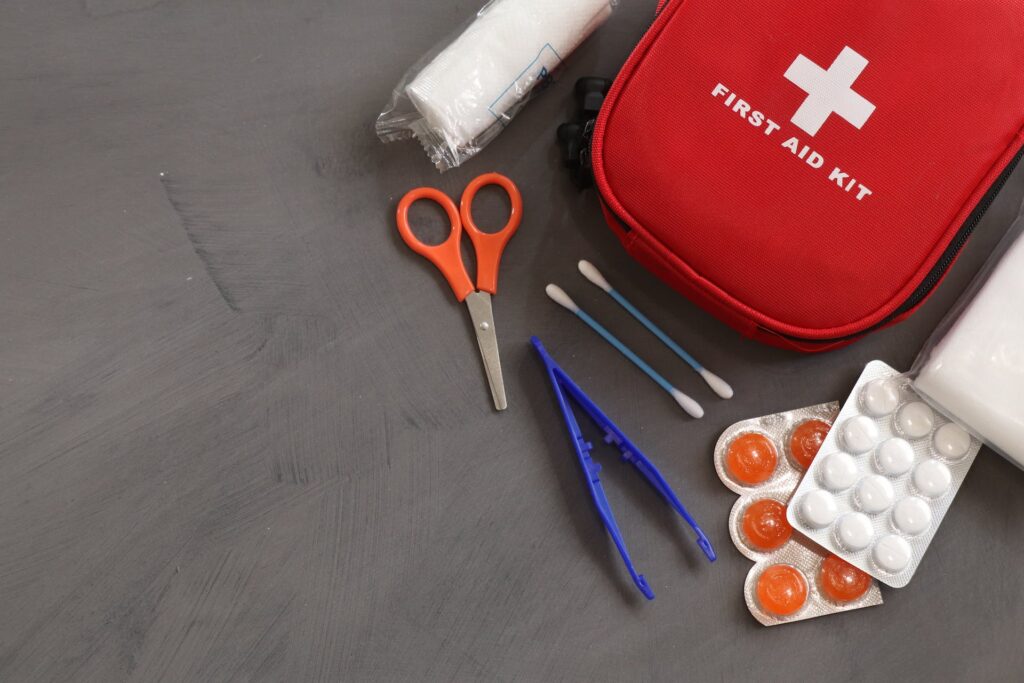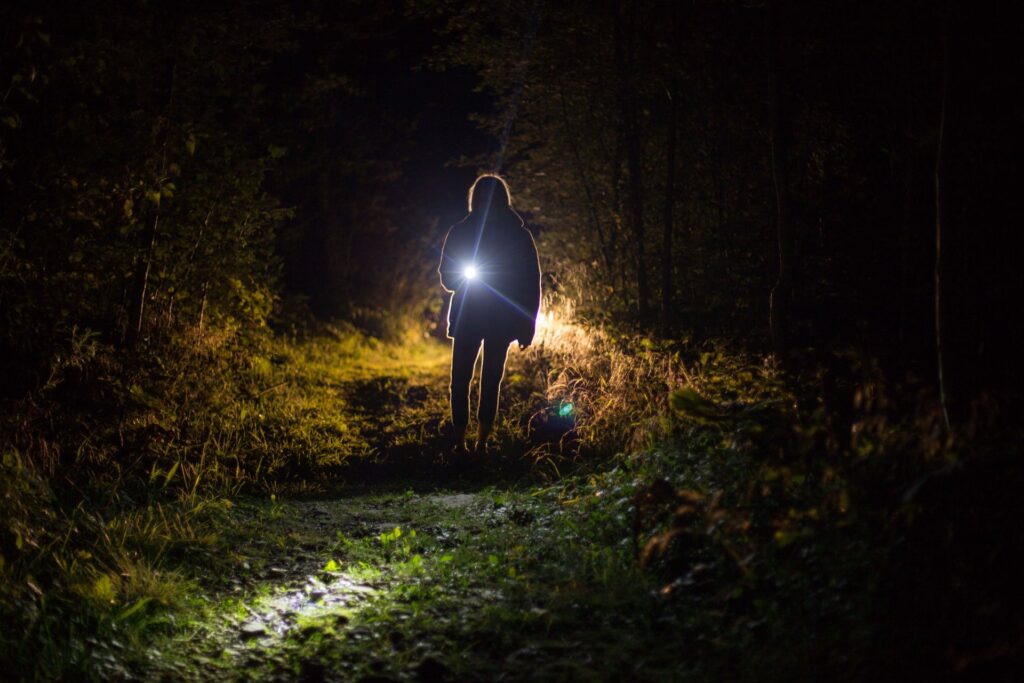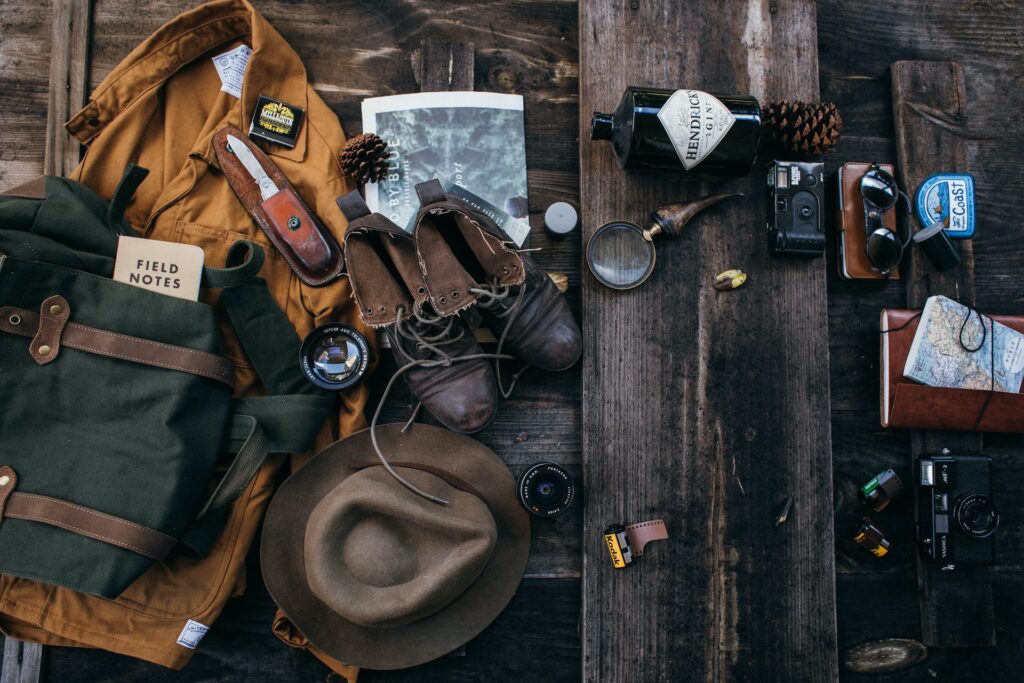Intro
Winter can be a beautiful and magical time to hit the trails, with snow-covered landscapes and crisp fresh air. However, it also brings with it some unique challenges for beginner hikers. From cold temperatures to potential hazards like ice and snow, proper preparation is crucial for a safe and enjoyable winter hike. One of the most important things to consider is having the right Hiking Gear for Winter. In this post, we’ll cover the essential hiking gear for beginners for winter, so you can bundle up and hit the trails with confidence.
Layers, Layers, and More Layers – Dress for Success

When it comes to winter hiking, the key to staying comfortable and safe is layering. You may start your hike feeling cold, but as your body warms up from the activity, you’ll want to shed some layers to avoid sweating too much. This is where the backpack becomes your best friend. Make sure you have a backpack that is spacious enough to carry your extra layers and easy to access when you need to add or remove clothing.
First and foremost, invest in a good pair of hiking boots. In winter conditions, you’ll encounter slippery surfaces, icy patches, and deep snow. Having sturdy, insulated hiking boots will provide you with the traction and support you need to tackle any terrain. Don’t forget to wear thick, moisture-wicking socks to keep your feet warm and dry.
Next, let’s talk about the most crucial layer – your hiking jacket. Look for a jacket that is waterproof and windproof to protect you from the elements. It should also have insulation to keep you warm. Remember, it’s better to have a slightly oversized jacket that allows you to add more layers underneath if needed.
Layering isn’t just about the outerwear. Start with a base layer made of moisture-wicking fabric to keep sweat away from your skin. Add a mid-layer such as a fleece or down jacket for insulation. Finally, top it off with a waterproof and breathable outer layer to protect you from rain, snow, and wind.
Remember, winter hiking can be demanding and unpredictable. By layering appropriately and investing in quality gear like hiking boots and a proper jacket, you’ll be well-equipped to tackle the trails with confidence. Stay warm, stay dry, and enjoy the winter wonderland that awaits you.
Hiking Boots Made for Winter Wonderlands

Winter hiking is a unique and exhilarating experience, but it also requires careful consideration of the right gear. When it comes to tackling snow-covered trails and icy terrain, having the right hiking boots is crucial. These boots will be your trusty companions as you navigate through winter wonderlands, providing the necessary traction and support.
First and foremost, invest in a pair of hiking boots that are specifically designed for winter conditions. Look for boots that have sturdy, non-slip soles with deep treads to grip the ground firmly, even in slippery situations. Insulation is another important factor to consider. Look for boots with insulation to keep your feet warm and comfortable throughout your hike.
In addition to the boots themselves, it’s also essential to wear thick, moisture-wicking socks to keep your feet dry and cozy. Moisture-wicking socks help prevent sweat from building up and causing discomfort or even blisters. They will also help regulate the temperature of your feet, keeping them warm without becoming too sweaty.
When it comes to dressing for winter hiking, the right boots are just one piece of the puzzle. Make sure you also have a spacious backpack that can accommodate extra layers and easily accessible compartments for quick changes. Your hiking jacket, for example, should be waterproof and windproof to protect you from the elements. It should also provide insulation to keep you warm. Layering is key, so choose a jacket that allows you to add more layers underneath if needed.
By investing in the right hiking boots and dressing appropriately for winter conditions, you’ll be well-prepared to tackle the trails. So lace up those boots, grab your backpack, and get ready to embrace the winter wonderland that awaits you. Happy hiking!
Your Best Friend – The Insulated Water Bottle

Winter hiking can be a strenuous and demanding activity, and it’s crucial to stay hydrated throughout your adventure. That’s where the insulated water bottle becomes your best friend. When you’re out on the trails in cold temperatures, it’s easy to overlook the importance of hydration, but it’s just as essential in winter as it is in any other season.
An insulated water bottle is a game-changer for winter hiking. It keeps your water from freezing, ensuring that you always have access to a refreshing drink. Unlike regular water bottles, insulated bottles are designed to maintain the temperature of your beverage, whether it’s hot or cold. This means that your water will stay cool and refreshing, even in freezing temperatures. On the other hand, if you prefer a warm drink to combat the chill, an insulated bottle will keep your beverage hot for hours.
Not only does an insulated water bottle provide you with the necessary hydration, but it also offers other benefits. Many bottles come with features like leak-proof lids and wide mouths for easy pouring and cleaning. Some even have built-in filters, allowing you to fill up from any water source along your hike. These features make it convenient and hassle-free to stay hydrated on the trails.
Remember, staying hydrated is essential for maintaining your body’s core temperature, preventing dehydration, and avoiding fatigue. So before you embark on your winter hiking adventure, don’t forget to grab your insulated water bottle. It’ll be your trusted companion, ensuring that you have a constant supply of water to keep you going. Stay hydrated, stay safe, and enjoy your winter wonderland!
Don’t Forget the Hiking Poles

As you prepare for your winter hiking adventure, don’t forget one essential piece of gear that can make a world of difference – hiking poles. These simple tools can provide stability, support, and even help conserve energy during your trek.
Hiking poles are not just for experienced hikers or those with balance issues. They offer benefits for hikers of all skill levels, especially in winter conditions. The extra support they provide can help prevent slips and falls on icy or uneven terrain. By distributing your weight more evenly, hiking poles reduce strain on your joints and muscles, making your hike more comfortable and enjoyable.
In addition to providing stability, hiking poles can also be used as an extension of your arms to test the depth and stability of snow-covered areas before taking a step. They can help you navigate through deep snow or loose terrain, giving you the confidence to explore off the beaten path.
When choosing hiking poles, look for ones that are adjustable, lightweight, and durable. Adjustable poles allow you to customize the height to your preference, while lightweight materials like carbon fiber make them easier to carry. Consider investing in poles with comfortable grips and shock-absorbing features for added comfort during long hikes.
Before you hit the trails, make sure you know how to use your hiking poles correctly. Place the poles slightly in front of you with your arms at a comfortable angle and use a natural, fluid motion to plant and swing the poles as you walk. Practice using them on various surfaces to get comfortable with their functionality.
So, don’t forget to add hiking poles to your essential gear list for winter hiking. They can provide that extra support and stability you need to confidently navigate through winter wonderlands. With your trusty hiking poles by your side, you’ll be ready to conquer any trail that comes your way. Happy hiking!
Fuel Up With High-Energy Snacks

When you’re out on the trails in winter, your body is working hard to keep warm and keep up with the demands of the hike. That’s why it’s important to fuel up with high-energy snacks to keep your energy levels up and your body performing at its best. But not all snacks are created equal when it comes to winter hiking. You need snacks that are easy to pack, won’t freeze or get soggy, and provide a good balance of nutrients.
One great option for winter hiking snacks is trail mix. It’s lightweight, easy to pack, and provides a good mix of carbohydrates, healthy fats, and protein. Look for trail mix that includes nuts, seeds, dried fruit, and maybe even a bit of dark chocolate for an extra boost of energy. You can also make your own trail mix at home to customize it to your taste.
Another good option is energy bars. These are convenient, compact, and usually packed with nutrients to keep you going. Look for bars that have a good balance of carbohydrates, protein, and healthy fats. Avoid bars that are high in sugar, as they can cause a spike in energy followed by a crash.
If you prefer something savory, jerky is a great option. It’s lightweight, high in protein, and can help satisfy hunger on the trail. Look for jerky made from lean meats like turkey or beef, and avoid varieties that are high in sodium or preservatives.
No matter what snacks you choose, make sure to pack them in a resealable bag or container to keep them fresh and protected from the elements. And don’t forget to hydrate! Pair your high-energy snacks with water or a sports drink to keep your body properly fueled and hydrated.
So, as you bundle up and hit the trails this winter, don’t forget to fuel up with high-energy snacks. They’ll keep your energy levels up and help you make the most of your winter hiking adventure. Happy snacking and happy hiking!
A Lifeline – The First Aid Kit

When you’re out on the trails, especially in the winter, safety should always be a top priority. That’s why having a first aid kit is absolutely essential. A first aid kit is your lifeline in case of any injuries or emergencies that may occur during your hike. It’s a small but powerful tool that can make a big difference in your overall hiking experience.
A well-stocked first aid kit should include the basics such as adhesive bandages, gauze pads, antiseptic wipes, and adhesive tape. These items can come in handy for treating minor cuts, scrapes, and blisters that may occur along the way. Don’t forget to include a pair of scissors and tweezers as well, as they can be useful for cutting tape or removing splinters.
In addition to the basic supplies, it’s important to pack any medications you may need, such as pain relievers, allergy medication, or any prescriptions you’re currently taking. It’s always better to be prepared and have these on hand in case of any unexpected medical issues.
Another essential item to include in your first aid kit is a hiking jacket. Why a jacket? Well, in case of any sudden changes in weather or if you need to wait for help, a warm and waterproof jacket can provide much-needed protection against the elements. It can also be used as a makeshift shelter or a way to signal for help if needed.
Remember, accidents can happen, and having a well-stocked first aid kit can provide peace of mind and potentially save a life. Make sure your first aid kit is easily accessible in your backpack and that everyone in your hiking group knows where it is. Hopefully, you won’t need to use it, but it’s always better to be safe than sorry. Stay prepared and stay safe on the trails!
Brighten Your Path – Headlamps and Flashlights

As the days get shorter and the nights grow longer, it’s important to have the right gear to navigate your way through the dark winter trails. That’s where headlamps and flashlights come in. These small but powerful tools can be a game-changer, providing you with the illumination you need to confidently explore the great outdoors.
Headlamps are a must-have for any winter hiker. Unlike flashlights, headlamps free up your hands, allowing you to easily navigate the trails while keeping your hands free for other tasks. Look for a headlamp with adjustable brightness settings, as this will give you the flexibility to conserve battery life or maximize brightness based on your needs. Make sure the headlamp is comfortable to wear, with adjustable straps that won’t dig into your head during long hikes.
Flashlights are another great option for lighting up your path. Whether you prefer a handheld flashlight or one that can be attached to your backpack or belt, make sure you choose one that is compact and lightweight. LED flashlights are a popular choice for their bright illumination and long battery life. Look for flashlights with multiple brightness modes or a zoom function, so you can adjust the beam to your desired level of brightness and focus.
Having a headlamp or flashlight is not only helpful for finding your way in the dark, but it’s also essential for safety. In case of any unexpected situations or emergencies, a reliable light source can make all the difference. It can help you signal for help, navigate treacherous terrain, or simply find your way back to the trailhead.
Remember, winter hiking brings unique challenges, and darkness is one of them. So, before you head out on your winter adventure, make sure you pack a reliable headlamp or flashlight. It’s the key to brightening your path and ensuring a safe and enjoyable hiking experience. Embrace the darkness, stay illuminated, and happy hiking!
Map and Compass – Navigate with Confidence

Whether you’re a seasoned hiker or just starting out, having the ability to navigate with confidence is crucial, especially in winter conditions. That’s where a map and compass come in. While modern technology has made it easier to rely on GPS and smartphone apps, it’s important to have a backup plan in case technology fails or the batteries die. A map and compass will never let you down.
Using a map and compass may seem intimidating at first, but with a little practice, you’ll become a pro. Start by familiarizing yourself with the map and understanding its key features, such as topography, trails, and landmarks. Pay close attention to the legend and scale to interpret the information accurately. You’ll also want to take note of any symbols or markings that indicate potential hazards or points of interest.
Next, learn how to orient your map to the surrounding terrain using your compass. This will ensure that the map is aligned with the actual landscape. By orienting the map, you’ll be able to determine which direction you need to go to reach your desired destination.
As you hike, continuously check your progress on the map and adjust your compass heading accordingly. Look for recognizable features or landmarks that match what you see on the map. This will help you stay on track and avoid getting lost.
Remember, a map and compass are only effective if you know how to use them. Practice navigating in familiar areas before venturing out into more challenging terrain. Take a map and compass with you on every hike, even if you think you know the trail well. Conditions can change, and having the ability to navigate with confidence will give you peace of mind and ensure a safe and enjoyable hiking experience.
So, embrace the art of navigation with a map and compass. It’s a skill that will serve you well, not just in winter hiking, but in all your outdoor adventures. Happy hiking!




